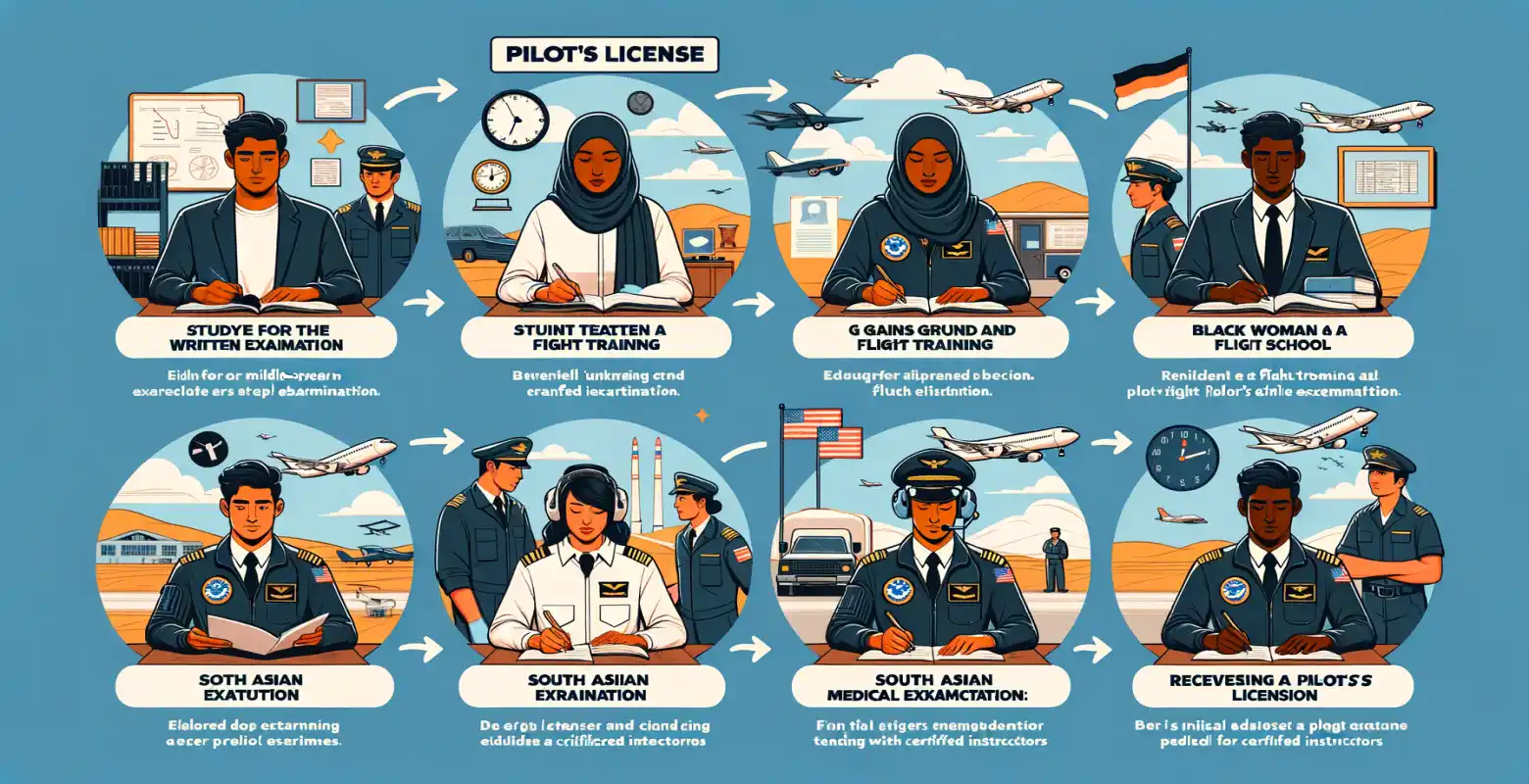What are the stages of obtaining a pilot's license?
Introduction
Obtaining a pilot's license is a dream for many people, which brings not only prestige but also the possibility of free movement and exploring the world from a bird's eye view. However, this process is complex and requires commitment, time, and significant financial investment. In this article, we will take a detailed look at the stages of obtaining a pilot's license, the requirements to be met, and the opportunities that open up for individuals who decide to pursue this career path. Finally, we will also discuss future trends in this field.
Basic requirements and types of licenses
Recreational Pilot License (RL) - This is the simplest form of license that allows piloting aircraft for non-commercial purposes. To obtain it, one must be at least 17 years old, undergo medical examinations, and complete a minimum number of training hours.
Private Pilot License (PPL) - This license allows for recreational and tourist flights, but non-commercial. It requires completion of 45 hours of training flights, including 10 hours of solo flights.
Commercial Pilot License (CPL) - This license allows for commercial flights. To obtain it, the candidate must already have a PPL license, complete 200 hours of flights, and pass a series of theoretical and practical exams.
Airline Transport Pilot License (ATPL) - This is the highest level in the pilot's license hierarchy, allowing for piloting large passenger aircraft. It requires obtaining a CPL license, completing 1500 hours of flights, and passing advanced exams.
Theoretical training
Every future pilot must undergo intensive theoretical training, covering a wide range of topics. Theoretical courses include learning meteorology, navigation principles, aviation regulations, flight principles, and standard operational procedures. This training is essential to understand how aircraft operate and how to maneuver them safely.
Theoretical training can usually be completed at certified training centers that offer flexible class schedules, often tailored to individual student needs. Modern technologies also allow for online courses, significantly facilitating learning for individuals with limited time.
Practical training
As part of practical training, future pilots learn how to operate an aircraft in real conditions. Under the guidance of an experienced instructor, students gain experience in various aspects of piloting, such as take-offs and landings, maneuvers in the air, night flights, and navigational flights.
The process of gaining practical experience is tailored to the type of license the student intends to obtain. For example, obtaining a PPL license requires a minimum of 45 hours of flight, while a CPL license requires 200 hours, including long-distance flights and navigational flights.
Exams and certification
After completing the required theoretical and practical training, the candidate must pass a series of exams to obtain a pilot's license. These exams include both theoretical and practical tests to assess the pilot's knowledge and skills in various situations.
Theoretical exams are usually conducted in the form of written tests, assessing knowledge of aviation regulations, meteorology, navigation, and flight principles. Practical exams take place in the air, where the candidate must demonstrate the ability to safely pilot an aircraft.
Medical and psychological examinations
Safety in aviation is paramount, so every pilot must undergo regular medical examinations confirming their ability to perform flights. These examinations include assessing vision, hearing, general health status, and psychomotor skills.
For professional licenses, psychological examinations are also required to assess the ability to cope with stress and make decisions in crisis situations.
Future and trends in obtaining a pilot's license
Technology is constantly evolving, and along with it, the way future pilots are trained is changing. Flight simulators are becoming increasingly advanced, allowing for more realistic and safe training. Virtual reality is also being used more often to facilitate learning procedures and maneuvers in a controlled environment.
At the same time, changing environmental protection regulations and growing interest in electric aviation may influence the future of pilot training. Aviation schools may soon start implementing training programs that incorporate new technologies and standards.
Summary
Obtaining a pilot's license is a demanding process but full of satisfaction. It requires dedication, determination, and significant investment, both in terms of time and finances. However, it opens doors to many opportunities, from recreational flights to a career in airlines. As technology and regulations evolve, this process may undergo changes, but it will always require pilots to demonstrate the highest level of professionalism and commitment.
For those who dream of a career in the skies, obtaining a pilot's license is the first step towards realizing those dreams. Regardless of the type of license chosen, it is crucial for future pilots to engage in learning and gain experience that will ensure their safety and satisfaction in their profession.






Number of comments: 0